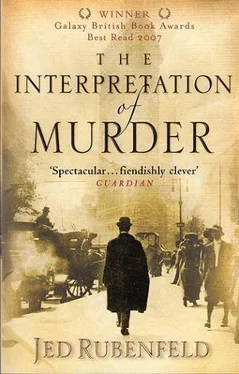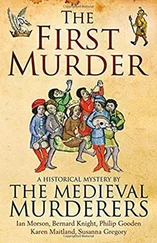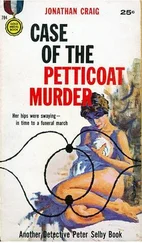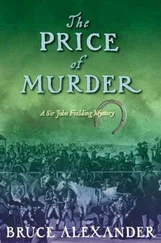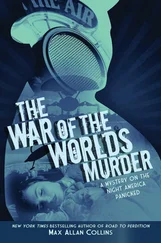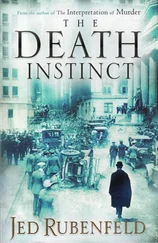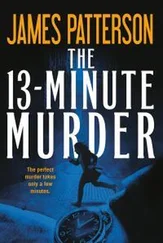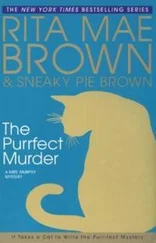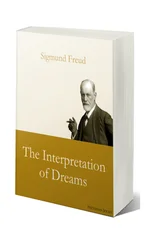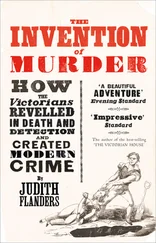Jed Rubenfeld - The Interpretation of Murder
Здесь есть возможность читать онлайн «Jed Rubenfeld - The Interpretation of Murder» весь текст электронной книги совершенно бесплатно (целиком полную версию без сокращений). В некоторых случаях можно слушать аудио, скачать через торрент в формате fb2 и присутствует краткое содержание. Жанр: Исторические приключения, на английском языке. Описание произведения, (предисловие) а так же отзывы посетителей доступны на портале библиотеки ЛибКат.
- Название:The Interpretation of Murder
- Автор:
- Жанр:
- Год:неизвестен
- ISBN:нет данных
- Рейтинг книги:5 / 5. Голосов: 1
-
Избранное:Добавить в избранное
- Отзывы:
-
Ваша оценка:
- 100
- 1
- 2
- 3
- 4
- 5
The Interpretation of Murder: краткое содержание, описание и аннотация
Предлагаем к чтению аннотацию, описание, краткое содержание или предисловие (зависит от того, что написал сам автор книги «The Interpretation of Murder»). Если вы не нашли необходимую информацию о книге — напишите в комментариях, мы постараемся отыскать её.
The Interpretation of Murder — читать онлайн бесплатно полную книгу (весь текст) целиком
Ниже представлен текст книги, разбитый по страницам. Система сохранения места последней прочитанной страницы, позволяет с удобством читать онлайн бесплатно книгу «The Interpretation of Murder», без необходимости каждый раз заново искать на чём Вы остановились. Поставьте закладку, и сможете в любой момент перейти на страницу, на которой закончили чтение.
Интервал:
Закладка:
I used to imagine other girls, prettier ones, consulting me. I used to imagine indescribable — but not impossible — events in my office. Thus it came to pass that whenever a new psychoanalytic patient first called on me, I found myself assessing her comeliness. As a result, I began to repulse myself, to the point where I wondered if I ought to continue holding myself out as an analyst. I hadn't taken on a new analytic patient all this summer — until Miss Acton.
And now she had invited me to kiss her. There was no hiding, from myself, what I wanted to do with her. I had never experienced so violent a desire to overpower, to possess. I very much doubted I was in the throes of the counter-transference. To be candid, I had felt the same desire practically the first instant I laid eyes on Miss Acton. But for her the case was clearly different. She was not just recovering from the trauma of a physical attack. More than this, the girl was suffering a transference of the most virulent strain.
She had shown every sign of disliking me until the moment when she felt her suppressed memories flooding back, released by the physical pressure I had applied to her neck. At that moment, I became for her some kind of masterful figure. Before then, dislike was too mild a term. She hated me; she said so. After that moment, she wanted to give herself to me — or so she thought. For it was plain as newsprint, sorry though I was to admit it, that this love she felt, if love it could be called, was an artifact, a fiction created by the intensity of the analytic encounter.
Although I have no memory of crossing Sixth or Seventh Avenue, I found myself abruptly in the middle of Times Square. I went to the roof garden at Hammerstein's Victoria, where I was to have met Freud and the others for lunch. The roof garden was a theater in its own right, with a raised stage, terraces, box seats, and a roof of its own fifty feet overhead. The show, a high-wire act, was still going. The tightrope artist was a bonneted French girl, clad in a sky-blue dress and blue stockings. Each time she threw out her parasol for balance, the well-dressed women in the audience would scream in unison. I have never understood why audiences react that way: surely the person on the high wire is only pretending to be in danger.
I couldn't find the others. I was obviously too late; they must have gone on. So I went back up to Brill's building on Central Park West, where I knew they would eventually return. No one answered the buzzer. I crossed the street and took a seat on a bench, quite by myself, Central Park behind me. From my briefcase I pulled out Hall's letter. After rereading it at least a half dozen times, I finally put it away and took out some other reading matter — I need hardly say what it was.
'You have them?' Coroner Hugel demanded of Louis Riviere, head of photographic facilities, in the basement of police headquarters.
'I am varnishing now,' called out Riviere, standing over a sink in his darkroom.
'But I left the plates for you at seven this morning,' Hugel protested. 'Surely they're ready.'
'Be tranquil, if you please,' said Riviere, switching on a light. 'Come in. You can look at them.'
Hugel entered the darkroom and pored over the pictures with nervous excitement. He went through the plates rapidly, one by one, casting aside those in which he was not interested. Then he stopped, gazing at a close-up of the girl's neck, showing a prominent circular mark.
'What's this, here, on the girl's throat?' he asked.
'A bruise, no?' said Riviere.
'No ordinary bruise would be so perfectly circular,' the coroner replied, taking off his glasses and bringing the picture within an inch of his face. The photograph showed a grainy, round black spot against an almost white neck. 'Louis, where is your glass?'
Riviere produced what looked like an inverted shot glass. The coroner snatched it from his hands, placed it on the photograph where the dark spot was, and put his eye to it. 'I have him!' he cried. 'I have him!'
From outside the darkroom came Detective Littlemore s voice. 'What is it, Mr Hugel?'
'Littlemore,' said Hugel, 'you're here. Excellent.'
'You asked me to come, Mr Hugel.'
'Yes, and now you'll see why,' said the coroner, gesturing for Littlemore to look through Riviere's magnifying glass. The detective complied. Under magnification, the grainy lines inside the black circle resolved into a more distinct figuring.
'Say,' said Littlemore, 'are those letters?'
'They are indeed,' replied the coroner triumphantly. 'Two letters.'
'There's something funny about them,' Littlemore went on. 'They don't look right. The second one could be a J. The first one — I don't know.'
'They don't look right because they are backward, Mr Littlemore,' said the coroner. 'Louis, explain to the detective why the letters are backward.'
Riviere looked through the glass. 'I see them: two letters, interlocking. If they are backward, then the one on the right, which Monsieur Littlemore called J, is not J but G.'
'Correct,' said the coroner.
'But why,' Riviere asked, 'should the writing be backward?'
'Because, gentlemen, it is an imprint left on the girl's neck by the murderer's tiepin.' Hugel paused for dramatic effect. 'Recall that the murderer used his own silk tie to strangle Miss Riverford. He was clever enough to remove that tie from the murder scene. But he made one mistake. On his tie, when he committed the act, was his pin — a pin embossed with his own monogram. By chance, the pin was in direct contact with the soft, sensitive skin of the girl's throat. Because of the extreme and lengthy pressure, the monogram left an impression on her neck, just as a tight ring will leave an indentation on the finger. This imprint, gentlemen, records the murderer's initials as definitively as if he had left us a calling card, except in mirror image. The letter on the right is a reverse G, because G is the first initial of the man who killed Elizabeth Riverford. The letter on the left is a reverse B, because that man was George Banwell. Now we know why he had to steal her body from the morgue. He saw the telltale bruise on her neck and knew I would eventually decipher it. What he did not foresee was that stealing the corpse would be useless — because of this photograph!'
'Mr Hugel, sir?' said Detective Littlemore.
The coroner heaved a sigh. 'Shall I explain it again, Detective?'
'Banwell didn't do it, Mr Hugel,' Littlemore said. 'He's got an alibi.'
'Impossible,' said Hugel. 'His apartment is on the same floor of the very same building. The murder occurred between midnight and two on a Sunday. Banwell would have returned from any engagement before that.'
'He's got an alibi,' Littlemore repeated, 'and what an alibi. He was with the mayor all Sunday night until early Monday morning — out of town.'
'What?' said the coroner.
'There is another flaw in your argument,' interjected Riviere. 'You are not so familiar with photographs as I. You took these pictures yourself?'
'Yes,' replied the coroner, frowning. 'Why?'
'These are ferrotypes. Most retrograde. You are fortunate I keep a supply of iron sulfate. The image you have here differs from the reality. Left is right, and right is left.'
'What?' said Hugel again.
'A reverse image. So if the mark on the girl's neck is the reverse of the true monogram, then the photograph is the reverse of the reverse.'
'A double reverse?' asked Littlemore.
'A double negative,' said Riviere. 'And a double negative is a positive. Meaning that this picture shows the monogram as it would actually look, not a reverse of it.'
'It can't be,' cried Hugel, more injured than disbelieving, as if Littlemore and Riviere were deliberately trying to rob him.
'But undoubtedly it is, Monsieur Hugel,' said Riviere.
Читать дальшеИнтервал:
Закладка:
Похожие книги на «The Interpretation of Murder»
Представляем Вашему вниманию похожие книги на «The Interpretation of Murder» списком для выбора. Мы отобрали схожую по названию и смыслу литературу в надежде предоставить читателям больше вариантов отыскать новые, интересные, ещё непрочитанные произведения.
Обсуждение, отзывы о книге «The Interpretation of Murder» и просто собственные мнения читателей. Оставьте ваши комментарии, напишите, что Вы думаете о произведении, его смысле или главных героях. Укажите что конкретно понравилось, а что нет, и почему Вы так считаете.
